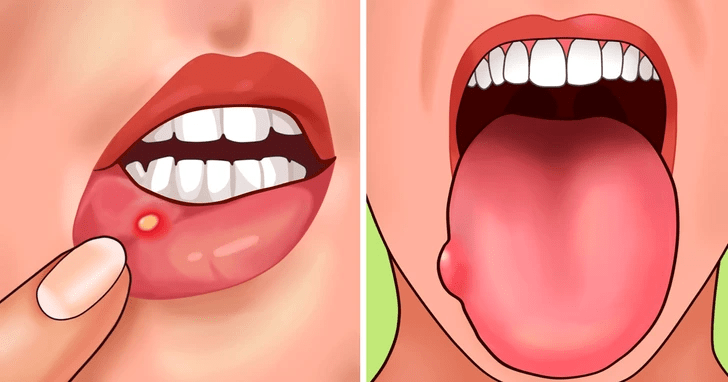Our bodies have a remarkable way of communicating when something isn’t quite right. From subtle changes to more noticeable symptoms, these signals can offer crucial insights into our health.
CONTENT IS PROVIDED FOR INFORMATIONAL PURPOSES ONLY AND IS NOT INTENDED AS A SUBSTITUTE OF MEDICAL ADVICE.
SEEK GUIDANCE OF YOUR DOCTOR REGARDING YOUR HEALTH AND MEDICAL CONDITIONS.
1. Changes in eye color

Doctors have observed that a white or gray ring around the cornea of the eyes may indicate high cholesterol in individuals under 45 years old. While the ring itself is harmless and primarily a visual phenomenon, it can serve as an early warning sign of underlying health issues.
It’s important to consult a healthcare provider if you notice this ring, as early detection of high cholesterol can help prevent more serious conditions.
Regular check-ups and monitoring of cholesterol levels are recommended, especially for those who exhibit this sign.
The ring is commonly associated with aging, but it’s not necessarily a direct indicator of high cholesterol in everyone.
2. Breast skin dimpling

While a lump is the most recognized symptom of breast, dimpling of the breast can also be an important warning sign. This dimpling often appears as a slight indentation in the skin, accompanied by an uneven texture.
Breast dimpling occurs when a tumor within the breast pulls on the surrounding healthy tissue, causing the skin to become distorted. The dimpling may also become evident if a lump is situated close to the skin’s surface.
However, it’s important to note that dimpling can also result from noncancerous conditions, such as fat necrosis, where damaged fatty tissue leads to changes in the skin’s appearance.
3. Grinding teeth

Recent research indicates that teeth grinding (bruxism) may sometimes be associated with parasitic infections, although the exact cause-and-effect relationship remains unclear.
Parasitic infections are often accompanied by issues like nutrient deficiencies and food sensitivities, which can place additional stress on the body.
Since teeth grinding is frequently linked to stress, this connection could explain the relationship. Additionally, parasites have a profound impact on the gut, which communicates with the brain through the vagus nerve.
This suggests that toxins produced by infections might disrupt brain signaling, potentially contributing to bruxism.
Further studies are needed to fully understand these complex interactions.
4. Dark patches of skin

The exact cause of dark patches on the skin isn’t entirely understood, but sensitivity to estrogen and progesterone is known to be linked to the condition.
As a result, factors like birth control pills, pregnancy, and hormone therapy can trigger melasma.
Additionally, stress and thyroid disease are also believed to contribute to the development of melasma.
5. Eyebrow loss

Eyebrow hair loss, medically referred to as eyebrow hypotrichosis or eyebrow madarosis, can lead to thinning or missing patches of hair in the eyebrows.
This condition can affect both men and women and may occur on one or both sides of the brows.
Additional symptoms might include itchiness, dry skin, and hair loss or thinning in other areas of the body.
Various factors, such as hormonal imbalances, dietary deficiencies, and certain skin conditions, can contribute to eyebrow hair loss. Identifying the underlying cause is essential for determining the most effective treatment.
6. Yellow tears

The meibomian glands in your eyes produce oil that helps lubricate and prevent dryness.
However, if these glands produce too much oil, it can mix with tears, causing them to appear yellow and feel greasy.
Yellow tears can also stem from other factors, such as infections or allergies. In these situations, the yellow color may be due to pus from an infection or a reaction to external irritants.
7. Mouth sores and tongue swelling

These symptoms typically appear when folate deficiency is quite advanced, so they should not be ignored. Your tongue might appear swollen, red, or shiny, especially around the tip and edges.
Additionally, due to a reduction in red blood cells, you might experience pain while swallowing, as well as a sore tongue and stomatitis.
8. Skin and nails problems

Hair keratosis and herpetiform dermatitis are two skin conditions linked to gluten intolerance.
Symptoms typically include itchiness and rashes that may appear on areas such as the hands, torso, face, buttocks, elbows, and hairline.
Additionally, individuals may experience weakened and brittle nails.
Other skin issues that resemble eczema can also indicate a gluten-related reaction.
9. Floating stools

While stools typically sink in the toilet, certain changes in your body can cause them to float. Foods you eat may contribute to gas in your stools, which can prevent them from sinking.
Floating stools are generally not a cause for concern, but you might consider reducing your intake of foods like beans, milk, or apples, as they can produce gas.
10. Feeling cold all the time

As the weather turns colder, it’s natural to want to heat up your home. However, if you frequently find yourself reaching for an extra blanket, it could be a sign of low thyroid production. Reduced thyroid hormone levels can slow down your metabolism, making you feel cold even in a comfortably warm room.
This condition, known as hypothyroidism, can also cause other symptoms like fatigue and weight gain. If you suspect a thyroid issue, it’s a good idea to consult a healthcare provider for proper evaluation and treatment.
Paying close attention to your body’s signals is crucial for catching potential health issues early and preventing more serious problems down the line.
source: brightside